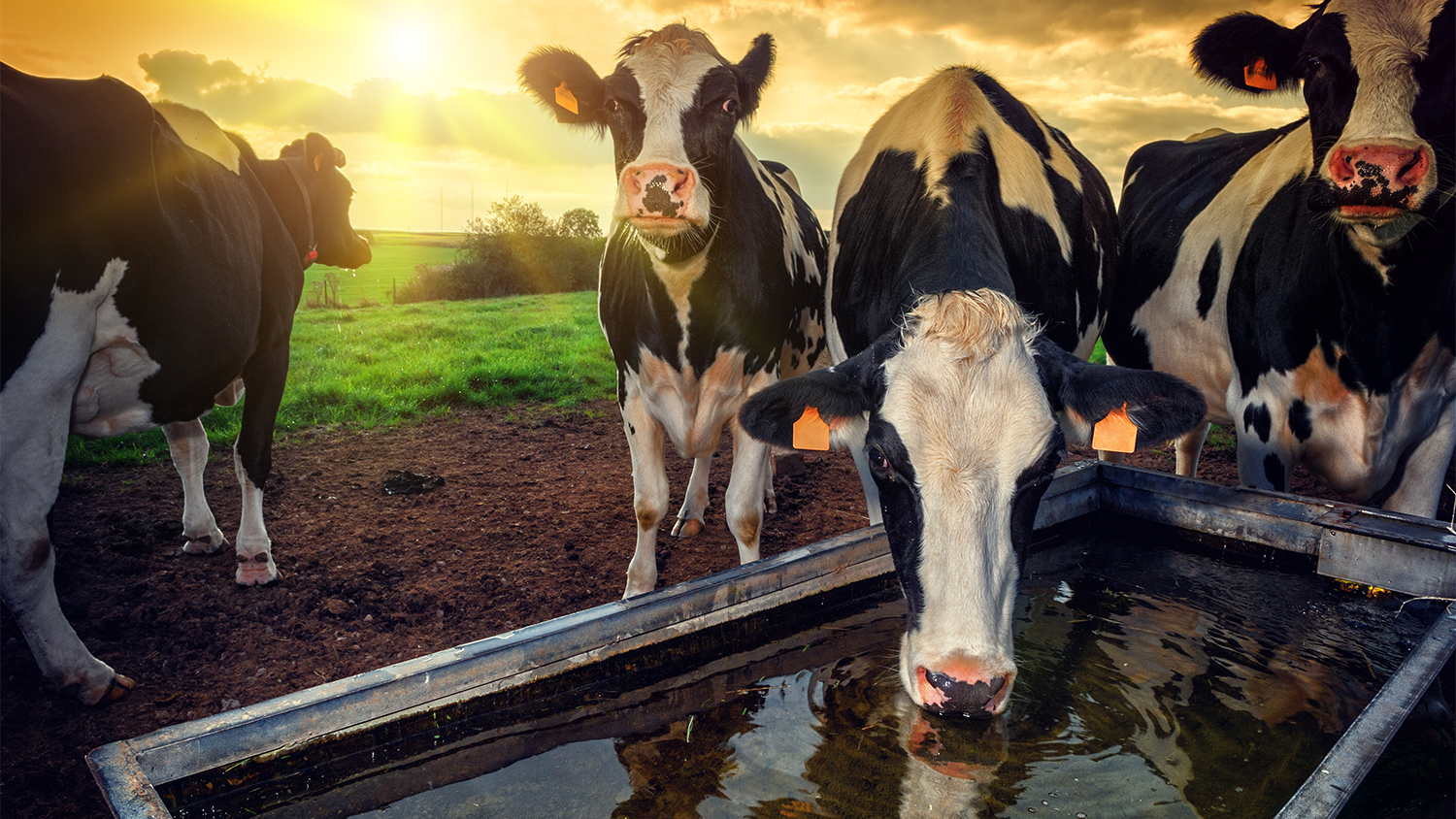Q. I live in drought-stricken California. While I eat a largely plant-based diet, I enjoy a good 100-percent grass-fed steak or hamburger every now and then. Everyday there’s a new article about how much water is needed to grow X, Y, or Z in California, and the latest I’m hearing is that it takes 1,800 gallons to create a pound of beef.
My question for you is whether purely grass-fed beef uses less water than conventional grain-fed beef. Please help me feel better about my supposedly “good” beef consumption!
Michael F.
A. Dearest Michael,
For such a peaceful, dewy-eyed creature, the cow sure can whip up a bale-ful of confusion, controversy, and passion. Some of us want to eat beef, and we point to scientific studies proving this is a good idea; others just as vehemently don’t want to eat beef, and point to research of their own. Opinions on this matter tend to be loud and fiery. This can be especially difficult for thoughtful people like yourself, who understand the benefits of a largely plant-based diet but also indulge in carnivorousness from time to time. I won’t beat around the bush here: The best practices for beef-eating are far from clear. But let’s talk it out, shall we?
First, a caveat: The environmental impacts of a T-bone vary quite a bit according to just how that T-bone was raised. Cattle operations, like anything else, can be managed well or poorly, so keep in mind that researchers have to look at broad averages when crunching their numbers. Also keep in mind that most studies look at global averages, not California cows drinking California water.
Now, Michael, to your question about the water footprint — or the total water used in all stages of beef production — of grass-fed versus grain-fed beef. This measure is fairly comprehensive, considering everything from the water that helped grow the plants cows eat to the water pollution coming from agricultural runoff or manure. One thing everyone seems to agree on: All kinds of beef have a whopping water foot(hoof?)print. That 1,800 gallons per pound estimate (courtesy of The Water Footprint Network) looks like an ocean compared to other proteins, such as pork (576 gallons/pound), chicken (468 gallons/pound), and soybeans (216 gallons/pound).
So can grass-fed operations produce your burger with less water? Researchers have indeed looked at this question, and their answer is a resounding “Well, sorta.” To understand why, a quick terminology review is in order. A water footprint is split into three parts — the green, blue, and gray footprints. Green is rainwater. Blue is surface and groundwater (irrigation fits here). Gray is water pollution (runoff from fertilizers and pesticides, plus manure, in this case). For both grass-fed and grain-fed beef, the vast majority of water use comes from growing what cattle eat (and overall, it’s green water).
Studies report that grain-fed cows actually have a lower total water footprint than their pastured counterparts. Why? Because it’s more efficient to fatten grain-fed cows in feedlots than it is for the cows to pack on the pounds grazing on grass. That means grain-fed cows are ready for slaughter sooner, so they eat and drink less than grass-fed cows over their lifetimes. However, conventional cattle have higher blue and gray water footprints. For one, corn and other grains need more irrigation than rain-watered field grasses. For two, conventional cattle feed uses synthetic fertilizers and other polluting chemicals, which wash into local rivers and lakes. And for three, feedlot cows plop out lots of concentrated manure, which can also foul neighboring waterways. When it all shakes out, The Water Footprint Network gives the edge to grass-fed beef, because blue and gray water issues are a bigger deal than rainwater use.
Of course, water is only one factor to consider when we think about beef. Pro-grain fans argue that conventional cattle use fewer total resources (including land) and belch less climate-warming methane. Grass aficionados counter that pastures sequester enough carbon to make up for grazing cows’ higher carbon emissions, and that some cattle graze on marginal lands that we couldn’t have used for crops anyway. Plus, they keep the water cleaner by spreading out their manure.
The takeaway, Michael, is that we’re not so sure which beef is the clear winner. (And we haven’t even gotten into the animal rights implications yet!)
What we are sure of: Meat, especially beef, has a bull-sized impact on the planet, from its copious water use to its bloated carbon emissions. My best advice — and you knew this was coming, didn’t you? — is to stick with your plant-based preferences and make beef a rare indulgence. That alone will have a much bigger impact than chowing down on even the best grass-fed burgers. Here’s to a delicious BBQ season filled with Portobello burgers, bean patties, and grilled veggies!
Foragingly,
Umbra


